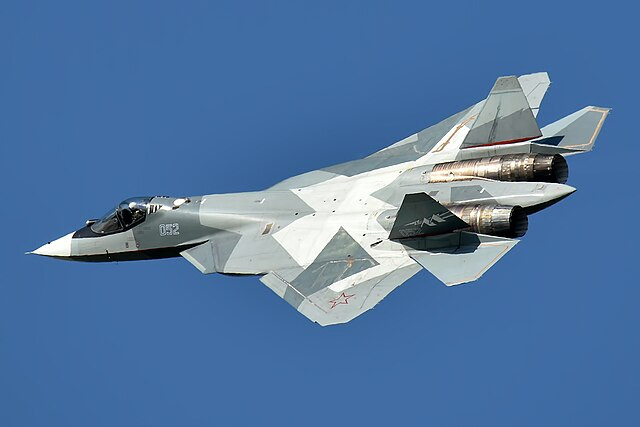Ukraine's military announced on Sunday that it successfully destroyed one of Russia's most advanced fighter jets in a drone strike deep within Russian territory. The Sukhoi Su-57 fighter jet, known as the "Felon" by NATO, was targeted at a military base in the Astrakhan region, nearly 600 kilometers behind the front lines of the ongoing conflict between Russia and Ukraine. This development marks a significant achievement for Ukraine, showcasing its capability to strike high-value targets far from the battlefield.
The Ukrainian Defense Intelligence Agency (GUR) supported its claim with satellite images posted on its Telegram channel. The images reveal that on June 7, the Su-57 was intact, but by June 8, craters and fire damage were visible near the aircraft.
The Su-57, a supersonic, twin-engine, fifth-generation stealth fighter, is regarded as Russia's response to Western stealth jets like the U.S. Air Force's F-22 Raptor. However, its development has been fraught with delays and setbacks since it began in 2002, including a crash during a test flight in 2019.
The Russian military first received the Su-57 in 2020, with reports indicating it had been tested in combat conditions in Syria in 2018. Despite Russian officials praising its capabilities, including its use of powerful weapons and its high degree of protection against air defense systems, the exact number of operational Su-57s remains unclear. According to Flight Global's "World Air Forces 2024" directory, Russia has 14 active Su-57s with another 62 on order.
Roses are red, violets are blue,
Your Su-57 is no longer new. pic.twitter.com/dbTNRL2o7q — Kate from Kharkiv (@BohuslavskaKate) June 9, 2024
If the reports of the Ukrainian drone strike are accurate, it represents a significant blow to Russia. The Su-57, with an estimated price tag of $35 million to $54 million, is a high-value asset. The loss of such an aircraft underscores Ukraine's growing proficiency in using low-cost drones to target valuable Russian military assets. Ukrainian drones have previously been used to damage or destroy Russian warships in the Black Sea and various armored vehicles on the battlefield.
"This is really a trend that the Russians are worried about," said CNN contributor Jill Dougherty, the network's former Moscow bureau chief. "The Ukrainians are attacking more and more inside Russia and taking the battle to them."
The attack has also led to criticism from Russian military bloggers, who faulted the military for not constructing hangars to protect the Su-57s. According to the Institute for the Study of War, these bloggers noted that protective hangars could be built at every airbase for the cost of a single Su-57.
The strike on the Su-57 follows recent approvals from the U.S. and other allies for Ukraine to use Western advanced long-range weapons to target sites within Russia. This permission has likely emboldened Ukraine to carry out more daring strikes against high-value targets. The destruction of the Su-57 highlights the increasing effectiveness of Ukraine's drone warfare capabilities and poses new challenges for Russia in safeguarding its military assets far from the front lines.
"The Ukrainians are attacking more and more inside Russia and taking the battle to them," Dougherty added.
In response to the attack, Russian Defense Minister Sergey Shoigu previously praised the Su-57's performance, stating it had "shown itself brilliantly" with its advanced protection and powerful weaponry. However, this recent loss calls into question the actual effectiveness of the Su-57 in real combat conditions and the Russian military's ability to protect its assets.






